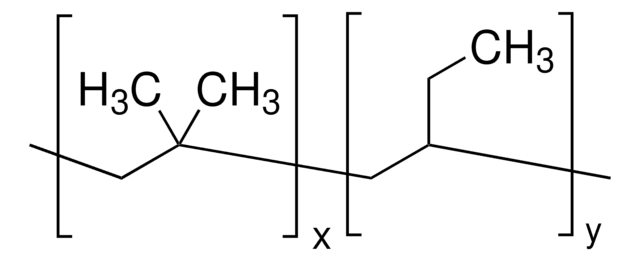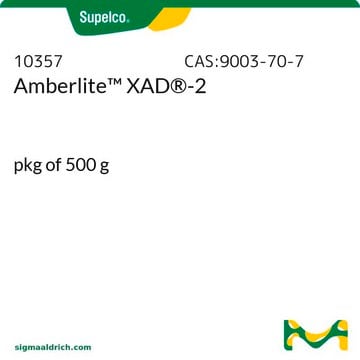181498
Polyisobutylene
average Mw ~4,200,000, average Mn ~3,100,000 by GPC/MALLS, average Mv ~4,700,000
About This Item
Produits recommandés
Forme
slab/chunk
Poids mol.
average Mn ~3,100,000 by GPC/MALLS
average Mv ~4,700,000
average Mw ~4,200,000
Contient
500 ppm BHT as stabilizer
Indice de réfraction
n20/D 1.51
Densité
0.92 g/mL at 25 °C (lit.)
Chaîne SMILES
CC(C)=C
InChI
1S/C4H8/c1-4(2)3/h1H2,2-3H3
Clé InChI
VQTUBCCKSQIDNK-UHFFFAOYSA-N
Vous recherchez des produits similaires ? Visite Guide de comparaison des produits
Description générale
Application
Code de la classe de stockage
10 - Combustible liquids
Classe de danger pour l'eau (WGK)
WGK 3
Point d'éclair (°F)
Not applicable
Point d'éclair (°C)
Not applicable
Équipement de protection individuelle
Eyeshields, Gloves
Certificats d'analyse (COA)
Recherchez un Certificats d'analyse (COA) en saisissant le numéro de lot du produit. Les numéros de lot figurent sur l'étiquette du produit après les mots "Lot" ou "Batch".
Déjà en possession de ce produit ?
Retrouvez la documentation relative aux produits que vous avez récemment achetés dans la Bibliothèque de documents.
Notre équipe de scientifiques dispose d'une expérience dans tous les secteurs de la recherche, notamment en sciences de la vie, science des matériaux, synthèse chimique, chromatographie, analyse et dans de nombreux autres domaines..
Contacter notre Service technique





